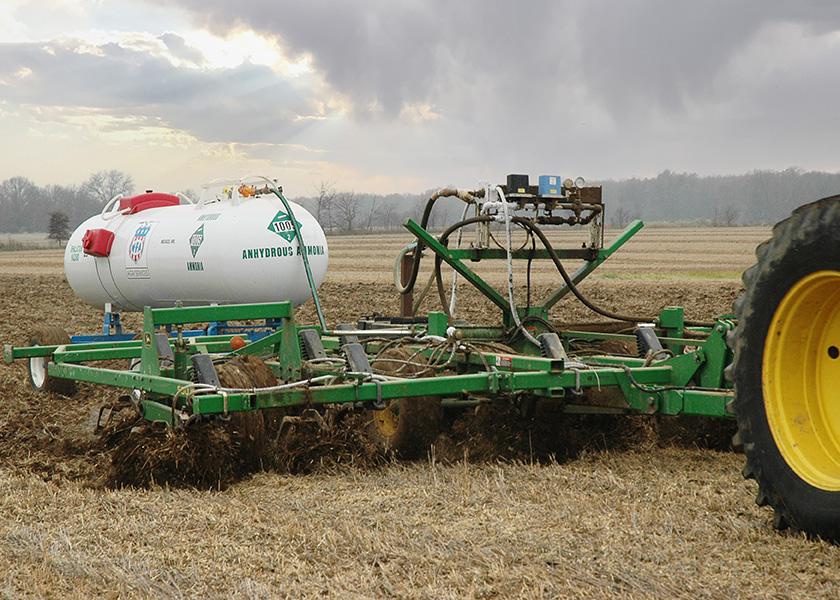Put Anhydrous on Corn Acres this Fall. Consider P and K, too, says Fertilizer Industry Expert

If you can use anhydrous ammonia, make a fall application on ground going into corn next spring to cover at least part of your nitrogen needs, recommends Josh Linville, director of fertilizer at StoneX.
“Right now the price of urea and the price of UAN is so high it is basically telling the market to go put on anhydrous,” he says. “We need to move your demand to anhydrous, because – from our perspective – we're going to struggle.”
Linville says once the demand starts to flow to anhydrous that will start to rally that market, but he sees few to no good options ahead.
“If you don’t have the ability to put on anhydrous, I’m afraid to say – of course anything can happen to change the world market – but it doesn’t look like we’re going to see much relief through next April, May or June,” he says.
Likewise, the global marketplace has Linville equally concerned about the availability of phosphorus (P) and potassium (K) next spring.
Because of current high prices, he initially thought -- as recently as a few weeks ago -- that demand destruction would occur if the marketplace entered this winter at full levels. If it occurred, it would encourage providers to cut prices of both P and K. Now, with actions underway by China and other countries, particularly in Europe, he doesn’t believe that’s the case.
All Energy Prices Are Up
Natural gas prices in Europe are expected to stay up through April, based on the futures price. Linville says for a European nitrogen production facility to produce 1 ton of anhydrous it is costing over $1,000 USD per metric tonne. Because the market cannot bear that kind of dollar value, the only other option some of the production facilities have is to shut down.
“When you look at the futures market for natural gas over there, this isn't a one-month issue. This is something where these future prices are showing that these levels are going to hold all the way through to April 2022,” Linville says. “So, when you talk about shutting down an entire global region of nitrogen production for that long of a time, you can start to understand why the rest of the world is just screaming higher.”
Phil Flynn, Price Futures Group, adds that the current situation in Europe and the UK is dire on a number of energy fronts.
“You’re seeing gas lines in the UK, you've got real warnings by people in Europe that are saying (they) might not have enough supply to get through winter. It’s a disaster,” Flynn says. “If you look at the big picture of global supplies, we’re at the tightest we’ve been in a decade… and it’s not even winter yet.”
The Impact Of China's Decision
The Chinese government has banned the export of phosphate, a major component of commercial fertilizer, through 2022.
“This is massive and will affect every corner of the globe,” Linville says, noting that China is approximately 39% of world operating capacity for phosphates and about one-third of the urea production around the world.
“When they pull out of a marketplace, it sends the entire world reeling and trying to figure out new trade flows,” he says.
On The Home Front
Despite the global turmoil, one silver lining that Flynn sees right now is that October temperatures here in the U.S. are expected to be higher than normal, staving off the need for high fuel requirements.
Virgil Schmitt, a farmer and an Iowa State University Extension field agronomist in eastern Iowa, adds that the warmer temperatures have meant farmers there are harvesting a fairly dry corn crop.
"They aren't using as much propane as in other years, as a result," he says.
Black Swans Boost Fertilizer Prices
Acreage Battle: Record Fall Fertilizer Applications Need to Factor Into the Acreage Debate







